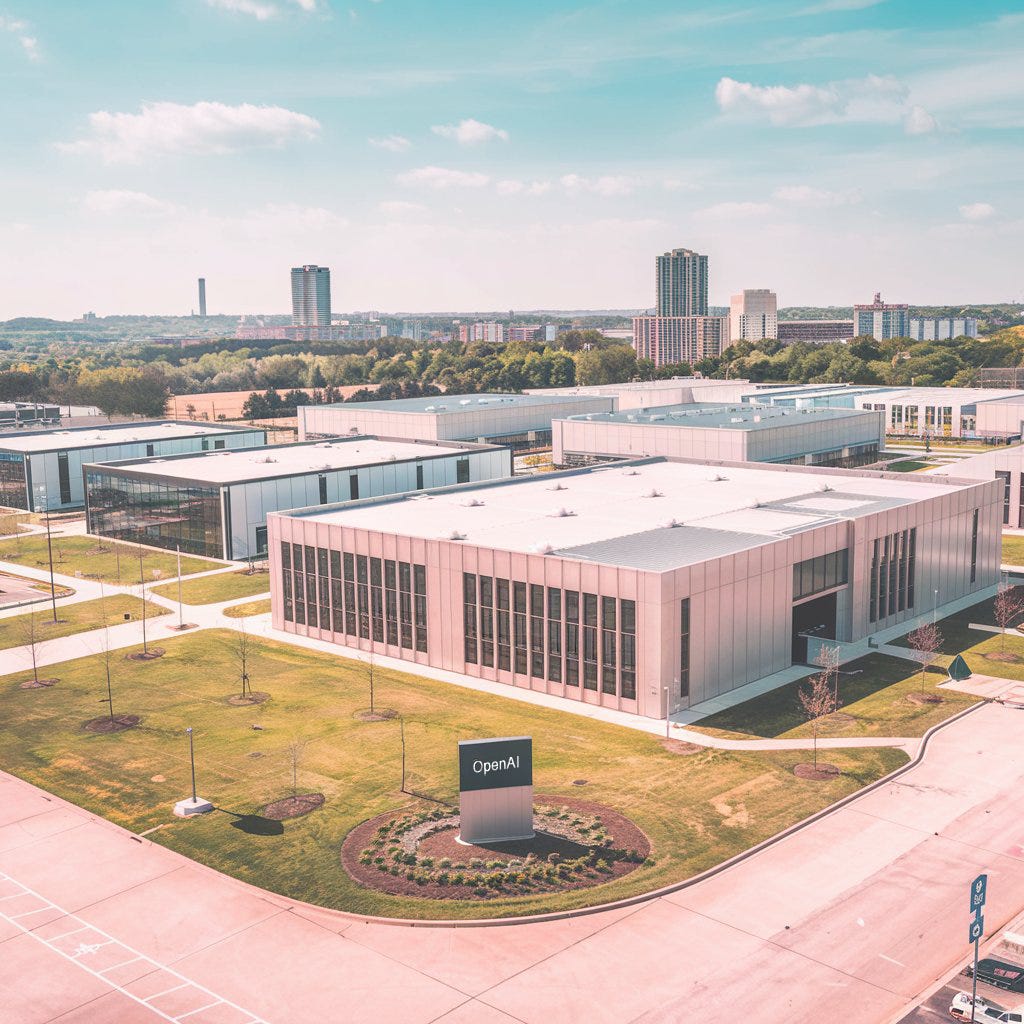Can OpenAI’s $500B Stargate Vision Scale Beyond the U.S.?
The U.S. buildout has begun but serious questions remain about whether OpenAI’s infrastructure moonshot can scale to Europe, Asia, or anywhere the grid can’t keep up.
Welcome to Global Data Center Hub. Join 1700+ investors, operators, and innovators reading to stay ahead of the latest trends in the data center sector in developed and emerging markets globally.
The U.S. phase of Stargate is already changing the map.
Announced in January 2025, OpenAI’s Stargate project wasn’t pitched as just another cluster of hyperscale facilities. It was framed as a new kind of industrial project $500 billion to build the physical layer of AI infrastructure across the U.S. and, eventually, the world.
The initiative came with nationalistic overtones. Backed by OpenAI, SoftBank, Oracle, and MGX, Stargate promised thousands of jobs, 5+ gigawatts of compute, and sovereign AI capacity aligned with U.S. interests. The first site, a 1.2GW mega-campus in Abilene, Texas, is partially operational. Oracle has already begun running inference workloads using Nvidia’s GB200 racks.
But Stargate was never meant to stay domestic.
Behind the scenes, the venture has entered an entirely new phase: evaluating which international markets can actually support the power, permitting, and political risk profile of what is arguably the most ambitious private infrastructure plan of the decade.
The result is a global test.
Not of AI capabilities but of who can build, host, and power the future.
Phase One: A U.S. Test Case Partly Working, Partly Strained
Abilene was the launchpad for a reason.
It combined:
Proximity to low-cost, deregulated energy via ERCOT
Political support at state and federal levels
Vast land availability
Favorable permitting and construction timelines
Yet even here, the project hasn’t been smooth. Internal tensions between OpenAI and SoftBank have slowed the unified rollout. Altman has reportedly resisted tying sites to SB Energy, while SoftBank has downplayed its actual capital commitments raising early doubts about the venture’s financing.
Instead of operating as one cohesive entity, Stargate has quietly fractured into parallel initiatives:
OpenAI is pushing ahead with Oracle on 4.5GW of additional U.S. capacity
CoreWeave has emerged as a key partner
The original Stargate JV is now more branding than structure
Even so, the foundational logic holds: massive model training requires massive compute. And Stargate is OpenAI’s bet on controlling the means of production.
But if the U.S. model is difficult to coordinate despite being home turf then exporting it abroad becomes exponentially harder.
Phase Two: Where Does Stargate Go Next?
OpenAI CEO Sam Altman is making a global push for Stargate, with exploratory talks in the UK, France, Germany, the UAE, and Southeast Asia. But the farther Stargate moves from Abilene, the more fragile the economics become.
The UK leads on policy and capital access. The Starmer government launched AI Growth Zones, streamlined planning, and signed an MoU with OpenAI. But its outdated grid is a drag some sites can’t connect until 2034.
France offers clean, sovereign power via its nuclear fleet and has attracted over €100B in AI-linked capital.
Germany focuses on industrial AI and early exascale systems.
All bring strengths. None are frictionless.
In Asia, the opportunity is larger but so are the risks.
Japan, South Korea, Singapore, and the UAE all have credible infrastructure, but scaling Stargate-class facilities raises challenges around land, latency, grid stability, and geopolitical friction.
India is eager, but slow-moving. Land acquisition, power supply, and high-voltage interconnection timelines remain misaligned with hyperscaler urgency.
Global expansion is possible but far from turnkey.
India is eager, but slow-moving. Land acquisition, power supply, and high-voltage interconnection timelines remain misaligned with hyperscaler urgency a dynamic explored in Adani’s $10B AI Power Play: Why India is Quietly Winning the Global Data Center Race.
What Stargate Really Tests
On the surface, this looks like a standard expansion plan.
But under the hood, it’s a stress test of three variables:
Power Sovereignty: Who can guarantee 500–1000MW of energy cheap, clean, and quickly?
Permitting Velocity: Which governments can greenlight hyperscale builds in quarters, not years?
Political Alignment: Who is willing to partner on AI infrastructure with a U.S.-anchored lab, and accept the national security implications that come with it?
The deeper truth is that Stargate isn’t just about building data centers.
It’s about rewriting the rules of sovereign infrastructure in the age of compute.
And OpenAI, despite its public-private DNA, is now acting as a kind of stateless infrastructure allocator, rewarding countries that can think and build at AI speed.
Other U.S.-anchored projects like xAI’s $10B initiative show how private ventures are now influencing national strategy.
So What’s Next?
If the UK can de-risk its grid and provide shovel-ready land, it could still win the first international Stargate.
If France can convert its energy strength into construction-ready sites, it might edge out its competitors on reliability.
If Japan or the UAE can cut through regulatory clutter and deliver pre-approved land, they could emerge as dark-horse candidates for Asia.
But make no mistake: the wildcard isn’t policy. It’s infrastructure.
And the hard constraints of power, land, and lead time are indifferent to vision statements.
The Real Lesson
Stargate’s expansion if it happens won’t be a reward for ambition.
It will be a reward for readiness.
That’s the quiet message embedded in every site visit, every MoU, every engineering due diligence call happening right now.
In the next 12–18 months, we’ll find out which countries are just talking about AI and which ones are ready to build its backbone.

